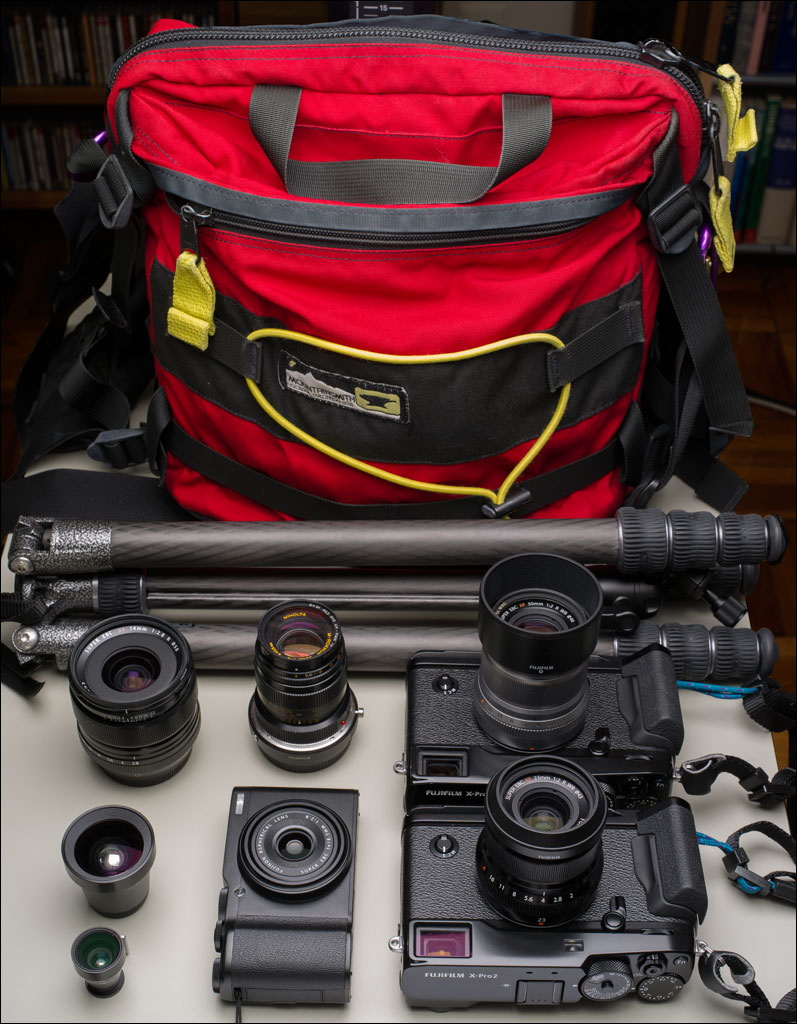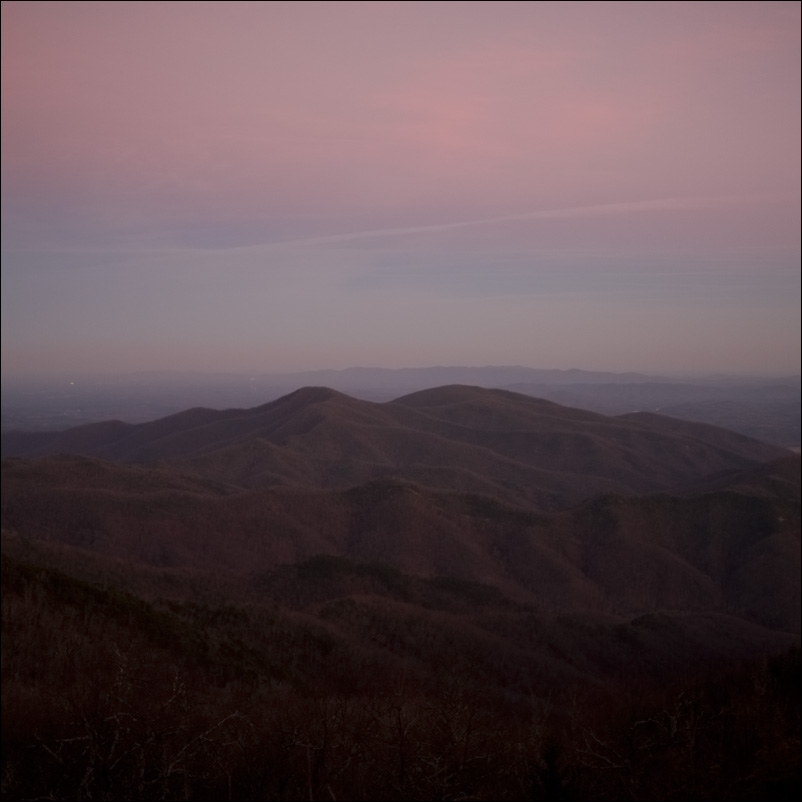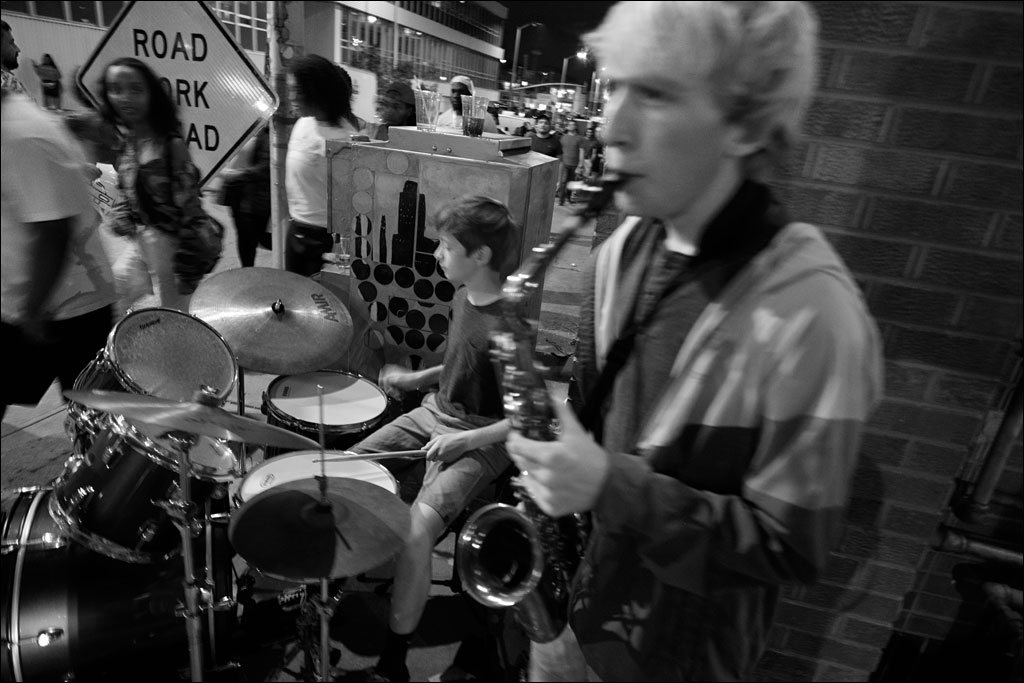 My Fujifilm equipment is used for street and travel photography. I love the spontaneity of this system, which partly comes from the size and partly from the design. I often mix and match what I take on an outing or trip.
My Fujifilm equipment is used for street and travel photography. I love the spontaneity of this system, which partly comes from the size and partly from the design. I often mix and match what I take on an outing or trip.
I have three cameras:
I use four lenses with the X Pros:
- Fujifilm XF14 f/2.8 [example image]
- Fujifilm XF23 f/2.0 [example image]
- Fujifilm XF50 f/2.0 [example image]
- Minolta M-Rokkor 90mm f/4.0 [example image]
My most used lenses are the XF23 and XF50. I also carry optical viewfinders for the XF14 and XF23 to use at night—the projection of the frame lines in the camera’s optical viewfinder wash out the view when photographing in very dark environments, for example, when shooting stars at night. [example image]
 Photo: Fujifilm X Pro2 and XF14
Photo: Fujifilm X Pro2 and XF14
I primarily bought the X Pro2 for its optical viewfinder. I love the simplicity of this camera type. Using frame lines is like cutting out sections from a scene, eliminating what is not needed. The other advantage of this viewfinder is there is no blackout during exposure, so I can see what is happening in the frame when the image is taken. As well as a choice of lenses, the ability of selecting format aspect ratios among 3:2, 1:1, and 16:9 adds an additional level of control over the image (they also represents the formats of two of my favorite cameras: Mamiya 6 and Horseman SW612).
 Photo: Fujifilm X Pro2 and XF23
Photo: Fujifilm X Pro2 and XF23
The Fujifilm XF10 is a remarkable compact camera. It has all the image quality of the larger X Pros in a pocket-sized, inconspicuous body. What I initially found difficult was a lazy mindset with compact cameras: I would just take grab shots without much effort or thought. I had to consciously bring the skill and discipline I used with my larger cameras to this one. This camera also gives me an additional focal length of 18.5mm.
 Photo: Fujifilm XF10
Photo: Fujifilm XF10
I carry this equipment in an old Mountainsmith Day Pack lumbar pack with a padded insert. This bag has been one of my best investments: I have been using it since 1990. The lumbar pack can act as a shoulder bag, giving easy access to the equipment, or a waist pack, allowing easier navigation of obstacles or redistributing the load when I am tired. The large front pocket allows me to carry other things: gloves, headlamp, maps, and snacks. I find climbing gear better designed and more comfortable than bags specifically designed for photographic equipment.
Each camera and lens is in their own bag. I use nylon stuff sacks to cover my cameras. I can slip the sack over the camera while it is around my neck or on a tripod to protect it from dust and rain. The sacks are light, compact, and easy to clean. My lenses are in padded pouches with a carabiner so I can attach them to the outside the bag or to a waist belt. The XF10 compact camera is in a small bag that I can put in a coat pocket or attach to a belt.
I carry a Gitzo GT1545T Traveler carbon fiber tripod for long exposures. It can fit in my carry-on luggage, but is tall enough for me to use comfortably—I am six feet tall. I use a small generic ball head to minimize the weight and size.
When traveling by air, it is important for my gear to be carry-on. I use an Osprey Farpoint 40 liter backpack to travel, which usually gives me enough space for my Fujifilm system and clothes. I bag fits in an overhead compartment or under the seat in front of me, although that does limit my leg room. For more on this backpack, see the section on the Pentax 645D.

